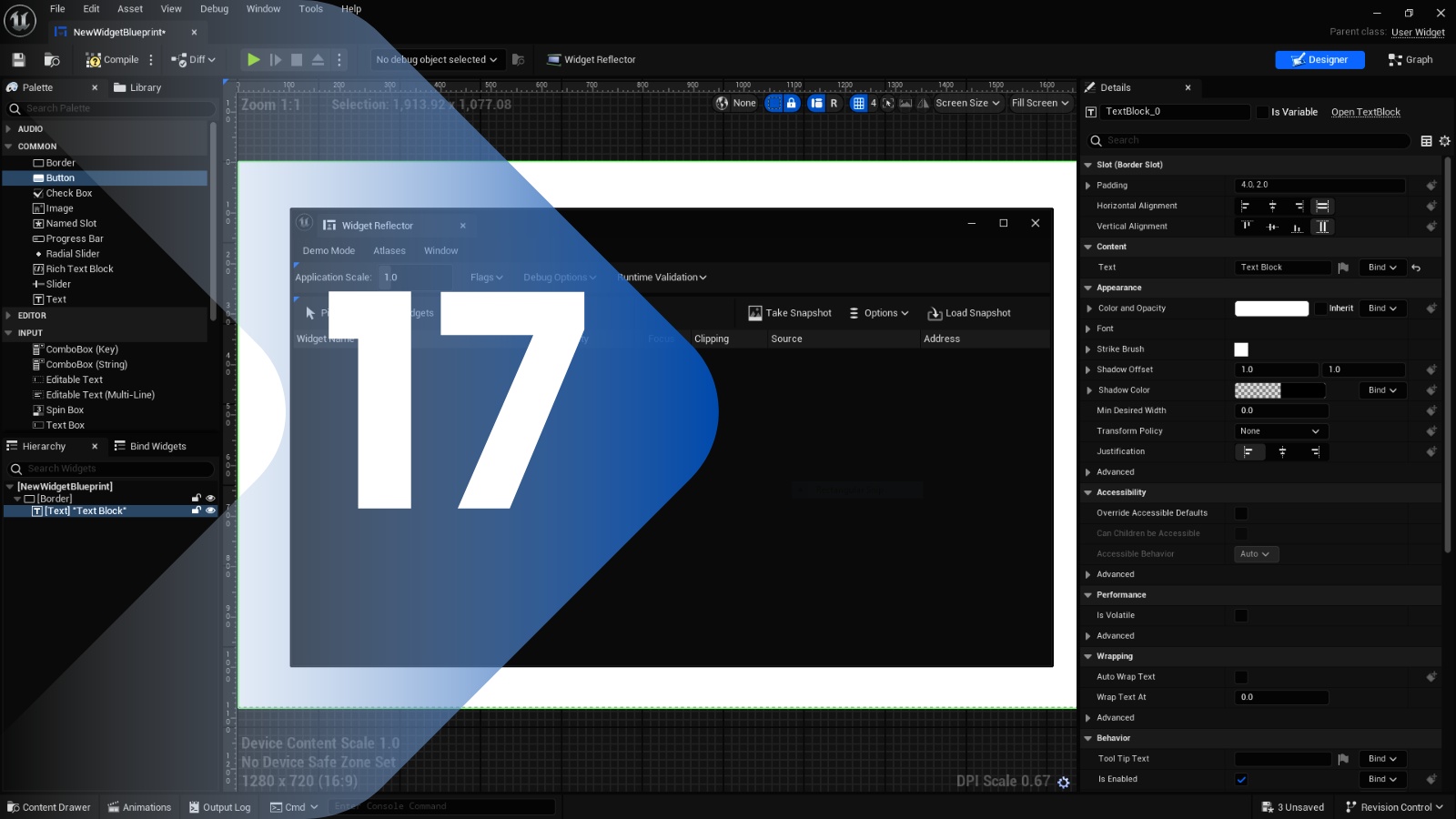
Games are not just about environments and characters—they must communicate clearly with players. On Day 17, you’ll explore Unreal’s UMG (Unreal Motion Graphics) system to create interactive and intuitive UI.
We begin by creating a basic HUD. You’ll design and position UI widgets such as health bars, ammo counters, crosshairs, and timers. You’ll explore the UMG Widget Blueprint system and learn how to bind UI elements to in-game variables for real-time updates. For example, a health bar that decreases dynamically as the player takes damage.
You’ll then integrate the UI into the game using the Create Widget and Add to Viewport nodes, along with player references to update values. Visibility logic will also be covered—making menus appear only when needed or disabling HUDs during cinematics.
UX principles will be emphasized: spacing, feedback animations, intuitive interaction (especially for mobile or gamepad users), and maintaining focus. You’ll also experiment with buttons, sliders, and 3D menus (e.g., floating UI panels in VR or for interactable world elements).
We’ll wrap up by creating a pause menu and a settings panel that adjusts audio volume or screen resolution using sliders and dropdowns.
By the end of the session, you’ll have the skills to build a functional UI with responsive interactions—essential for making your project feel professional, polished, and player-friendly.
